The genocide of March 25 as a metaphor

Pakistan is the metaphor of everything Bangladesh doesn't want to be. And the independent land we call Bangladesh today ceased to be a part of Pakistan on March 25, 1971 when the Pakistan state apparatus launched a genocidal war. The genocide was unique in the sense that it was perpetrated by the state against its own people. The Pakistani state lost its legitimacy by killing its own citizens.
Bangladesh's Proclamation of Independence has emphasised this causa finalis by stating, "Whereas the Pakistan government by levying an unjust war and committing genocide and by other repressive measures made it impossible for the elected representatives of the people of Bangladesh to meet and frame a constitution, and give to themselves a government… we declare and constitute Bangladesh to be sovereign peoples' republic."
The March 25 genocide became the metaphor for the irreparable break that the Bangladeshi state will never reverse. As if the Bangladeshi state, which pledged to uphold the principles of "equality, human dignity, and social justice," would never perpetrate such violence against its citizens. To fully comprehend the metaphor's significance, it is essential to have a more profound understanding of the nature of the violence that transpired on March 25, 1971.
Numerous eyewitness accounts exist regarding the events that occurred on that fateful night. In this instance, we are focusing on Ahmed Sofa's testimony. In his article titled "Dhakay Ja Dekhechhi Ja Shunechhi" (What I saw and heard in Dhaka), he vividly depicts the heinous brutality unleashed by the Pakistani state, showcasing a dreadful contempt for the democratic aspirations of the people of East Pakistan.
After spending the night of March 25 in a hideout, Ahmed Sofa ventured out when the curfew was lifted for a few hours the following morning. Upon witnessing the city's situation, his eyes were filled with tears. He described the scene as if thousands of savage animals had descended upon the city, leaving scars of destruction and chaos in their wake.
As we ponder the significance of March 25, it is critical to ask ourselves whether the oppressive nature of the state has changed. Are practices such as extrajudicial killings, enforced disappearances, custodial deaths, and the systematic persecution of religious and ethnic minorities, as well as the structural killing of labourers, still prevalent in contemporary Bangladesh?
He traversed the city, from Topkhana to Gulistan, then to Dhaka University, Medical College, Salimullah Hall, Pilkhana, and Rajarbagh. At every turn, he encountered signs of death, torture, rape, and barbarism.
The lethal apparatus of the Pakistani state not only killed the ordinary citizens, but also numerous members of the state's uniformed personnel, including police and EPR members. Historian Thomas Newbold aptly noted, "No other 'police operation' by a state before or since has started with the slaughter of its own security apparatus, and few other commanders who have ordered the killing of their soldiers in their barracks have ever had the nerve to accuse those they ordered to be murdered of 'betrayal.'"
While returning home, Ahmed Sofa discovered that the Pakistan Army had burnt down the newspaper offices of The People and Daily Ittefaq.
At the conclusion of his account for the day, he shared the distressing news of the brutal slaying of Lieutenant Commander Moazzem Hossain. The Pakistan Army, after murdering him in cold blood, tied his lifeless body to a jeep and dragged it along the road. Sofa expressed his sorrow, stating that they had killed a hero of Bengal and desecrated his body in such a despicable manner.
The following day, Ahmed Sofa went out once more and arrived at Ramna Kali Mandir, only to find it in ruins. The idols had been demolished by shelling. In the midst of such devastation, a thought occurred to him: where did all the people go? The region was cordoned off by soldiers, yet someone whispered to him that the army had first set fire to the houses by pouring petrol. When the inhabitants came out to escape the flames, the army opened fire on them.
Ahmed Sofa bore witness to numerous other heinous acts committed against the Hindu community in various areas of Dhaka. In Shankhari Bazar, he encountered hundreds of charred corpses displaying clear evidence of torture, rape, murder, and arson. According to Ahmed Sofa's testimony, the Pakistani junta specifically targeted religious minority communities. The collaborators of the Pakistan Army would identify Hindu homes and properties during the day, which the army would destroy under the cover of the night.
Ahmed Sofa witnessed the most horrific brutality near Nawabpur crossing, where shanties built by impoverished people lined both sides of the rail track in an area stretching from Tejgaon to Kamalapur. The Pakistan Army mercilessly set fire to the entire area, leaving burnt rubble and human skeletons. The stench of charred bodies permeated the whole air, Sofa testified.
The savage attacks extended to industrial areas and nearby labour colonies, such as Narayanganj, Demra, and Gazipur. The rampant hatred towards the labourers and the urban poor, often termed as "lumpen class," was fuelled in part by their active involvement in all the protests against the Pakistani state. Unfortunately, the sacrifices of the labourers and urban poor are conspicuously absent from the nationalist narrative of Bangladesh's liberation struggle.
On that day, the prominent Bangla daily Sangbad was set on fire.
Ahmed Sofa had to flee Dhaka to save his life. He ends his article with the lament, "Dhaka has become a dangerous place for students and young people. The Pakistan Army is shooting young people at sight and abducting them without any trace. The soldiers appear to have grown weary of killing, and the whereabouts of the arrested individuals remain unknown. Rumours are circulating that the detainees are being taken to a secluded area near the Shitalakkhya River in Narayanganj and shot dead, or that they are being drained of blood using syringes before being killed. In various parts of Dhaka, including Kamalapur and Dhanmondi, bloodless bodies have been discovered."
As I read Ahmed Sofa's testimony, a question continued to plague my thoughts in the context of present-day Bangladesh: what distinguishes state-sanctioned killing of one individual from the mass murder of many? Wasn't the genocide on March 25 the ultimate culmination of Pakistan's 24-year history of state violence? Perhaps the only difference lies in the number of victims.
As we ponder the significance of March 25, it is critical to ask ourselves whether the oppressive nature of the state has changed. Are practices such as extrajudicial killings, enforced disappearances, custodial deaths, and the systematic persecution of religious and ethnic minorities, as well as the structural killing of labourers, still prevalent in contemporary Bangladesh?
Shamsuddoza Sajen is a journalist and researcher.
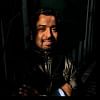
 For all latest news, follow The Daily Star's Google News channel.
For all latest news, follow The Daily Star's Google News channel. 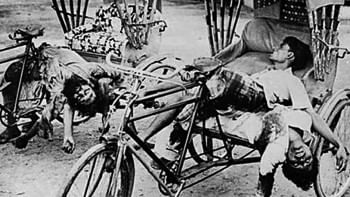
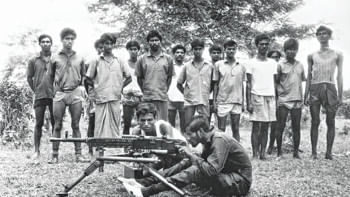


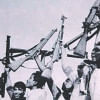



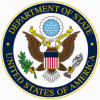


Comments